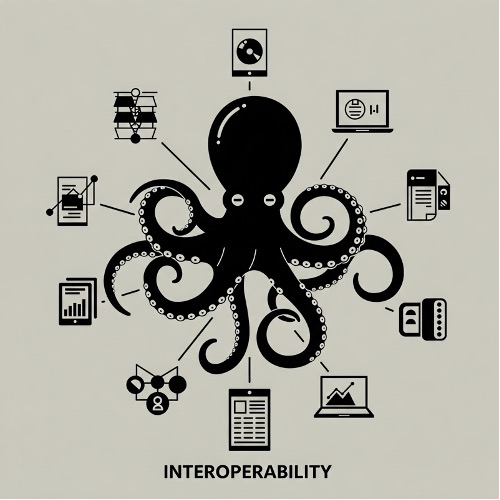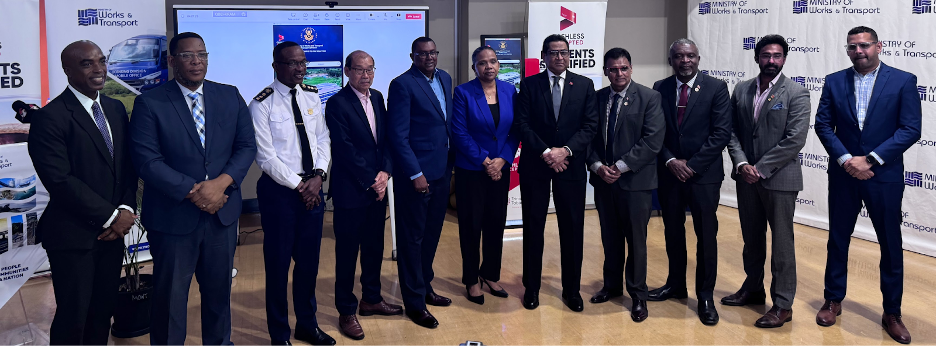Trinidad and Tobago has taken a major step in digital government with the launch of its first fully Online Driver’s Permit Renewal System (ODPRS) on April 3, 2025. Built through a partnership between the Ministry of Works and Transport (MOWT) and iGovTT, and TTPost, this system lets citizens apply, upload required documents, receive staff validation, pay by credit or debit card, and schedule permit pickup or delivery to their home —all without a single paper form.
This project exemplifies Digital Public Infrastructure in action —the assembly of modular, reusable government “building blocks”. Rather than coding everything from scratch, iGovTT integrated three mature DPI components: GovPayTT (an online payments platform handling 250,000+ transactions annually), the national appointment system (3 million views last year), and a home‑grown licensing workflow.

Leap Forward

In a significant step towards modernizing public services, Trinidad and Tobago’s Ministry of Works and Transport (MOWT) recently launched the Caribbean’s first wholly Online Driver’s Permit Renewal System (ODPRS). This innovative system allows current driver’s permit holders to navigate the entire renewal process digitally. Applicants can submit their applications and upload all necessary documents, including photographs, which are then certified by Licensing Division staff. Following validation, payment instructions are delivered via email, enabling citizens to complete the transaction online using credit or debit cards.
The National Information and Communication Technology Company, iGovTT, played a crucial role, developing key components of the solution. Critically, the ODPRS leverages Trinidad and Tobago’s existing digital assets. iGovTT partnered with MOWT to integrate previously developed systems, including the national appointment system for arranging the physical pickup of license documents and GovPayTT, the country’s established online payment facilitation platform. This strategic reuse of existing infrastructure highlights a core principle of modern digital governance.
Understanding Digital Public Infrastructure (DPI)
The ODPRS is a powerful example of what is increasingly referred to globally as Digital Public Infrastructure (DPI) in action. DPI represents a set of foundational, shared digital systems – like digital identity, payment platforms, and data exchange layers – that act as the “digital roads and rails” for a modern society. Unlike siloed, single-purpose applications, DPI emphasizes creating interoperable, reusable “building blocks”. These blocks can be combined to build various public and private services efficiently and securely, fostering innovation and inclusion. Digital public architectures can be seen as the strategic blueprint or framework, guiding the construction of this infrastructure using these building blocks.

Key characteristics of effective DPI include:
Interoperability: Systems must connect and exchange data seamlessly.
Modularity & Reusability: Built from distinct components (building blocks) that can be combined and reused.
Open Standards: Using open specifications where possible to avoid vendor lock-in and encourage innovation.
Security & Privacy by Design: Embedding safeguards from the start.
Robust Governance: Clear rules, policies, and oversight are essential.
T&T's ODPRS Components in the Global DPI Context
The ODPRS effectively utilises components that align with global DPI patterns:
GovPayTT: Functions as a Digital Payments building block, enabling secure online transactions for the renewal service. Its pre-existence and reuse exemplify the efficiency gained through a modular DPI approach.
National Appointment System: Serves as a reusable service delivery component, integrated to manage the final physical pickup step. Its reuse demonstrates the practical application of modular design.
Identity Verification: The current process involves document upload and manual staff certification. While effective, this differs from the automated, real-time verification seen in systems leveraging foundational digital IDs like India’s Aadhaar or Singapore’s Singpass. This highlights a potential area for future integration, possibly with platforms like MOSIP (Modular Open Source Identity Platform). This open-source ID system is already being explored in T&T.
Global DPI Examples: India, Estonia, and Singapore
Several countries offer influential models for DPI implementation:
India Stack: A comprehensive suite of open APIs including Aadhaar (foundational digital ID), UPI (real-time payments), DigiLocker (digital document wallet), and eSign (digital signatures). It has dramatically accelerated financial inclusion and digital transactions.
Estonia’s X-Road: A decentralized data exchange layer enabling secure interoperability between hundreds of public and private sector systems without centralizing data. It underpins the vast majority of Estonia’s e-government services and embodies the “once-only” principle.
Singapore’s NDI: Centered around the Singpass digital identity app, integrated with Myinfo (consent-based data sharing) and APEX (API gateway), providing seamless access to thousands of public and private services. It boasts high adoption and transaction volumes.
These examples show diverse successful strategies, from India’s comprehensive stack to Estonia’s data layer and Singapore’s ID-centric platform. Initiatives like GovStack (providing common frameworks and specifications) and MOSIP (providing an open-source foundational ID platform) further support countries in building their own DPI sustainably.
ODPRS: A Caribbean First and a Foundation for the Future

The ODPRS has achieved a number of significant milestones, including being the Caribbean region’s first completely online Driver’s Permit/Licence renewal process and the first online payment solution for the Licensing Division in the Ministry of Works and Transport.
As a collaboration between MOWT, iGovTT and TTPost, the ODPRS showcases an effective inter-agency partnership.
The ODPRS demonstrates Trinidad and Tobago’s commitment to leveraging digital technology for public good. By adopting a modular approach and reusing existing infrastructure like GovPayTT, it provides a practical blueprint – a “reference implementation” – for future digital government projects. This success builds national capacity, enhances citizen convenience, and strengthens the foundations of T&T’s evolving digital public infrastructure, paving the way for accelerated digital transformation and setting a benchmark for the region.


